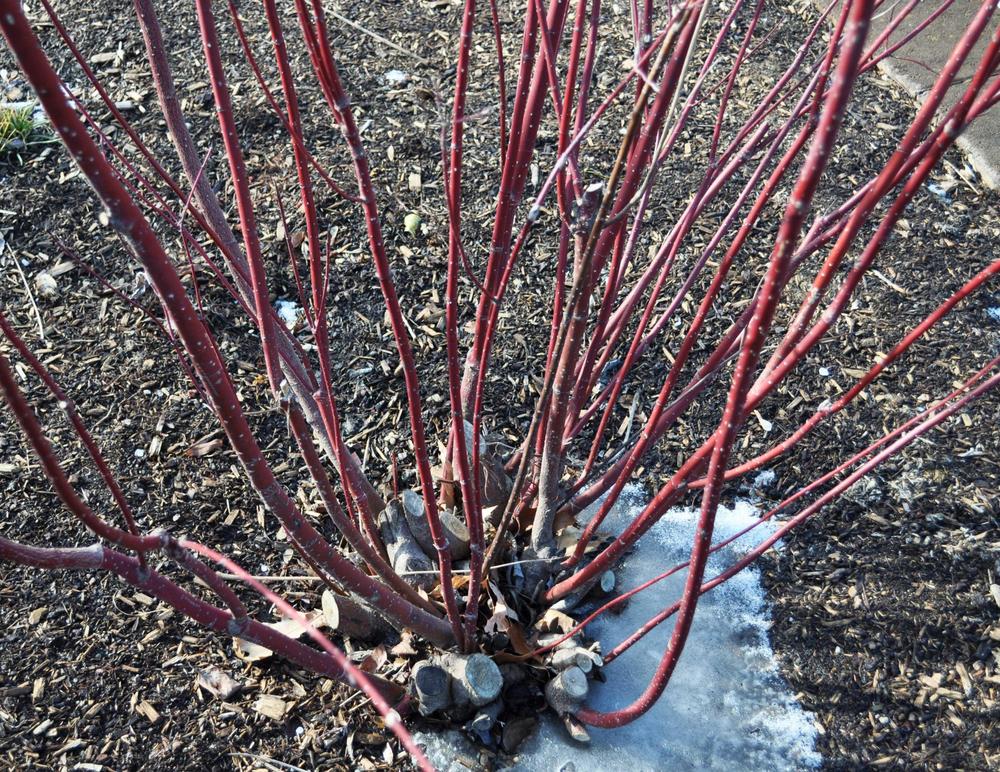Pruning is a task that few gardeners want to do, but it's essential. The more you do it, the more it makes sense, and the easier it is. The most important step is to get out there and prune something. With a little instruction and some common sense, you'll be able to prune your trees, shrubs, and roses like a pro and have beautifully shaped, flowering plants to boot.

Most deciduous and evergreen trees need little pruning once they're established in your yard. There will be times, however, when you'll need to do corrective pruning to remove a broken branch, diseased limb, or dead growth. The best time to prune is late spring for most trees. Trees that easily bleed sap, such as birches, are better pruned in late summer. For large shade trees, consider hiring a professional tree service to remove limbs that are high in the air. For many smaller trees and for limbs close to the ground, you can be the tree surgeon, equipped with the right tools and some basic information.
Prune side branches back to the main branch or trunk, leaving the collar (stub of a branch that resembles a raised ring around the base of the branch). Leaving this collar intact is essential to the proper healing of the wound. When pruning large limbs, over 1-1/2 inches in diameter, use a pruning saw or bow saw to make a 3-part cut. The first cut should be underneath the branch about 6 to 12 inches away from the trunk, about 1/3 of the way through. Make the second cut 3 inches away from the first cut towards the end of the branch. As you are making the cut, the branch will fall. Then cut the resulting stub back to the branch collar. For smaller branches, use a pruning saw or hand pruners to remove branches, cutting back to an outward-facing bud or intersecting branches.
Prune Flowering Shrubs
Flowering shrubs are a bit more complicated to prune. The timing depends on the type of shrub you're growing. Prune spring-blooming shrubs, such as forsythia and rhododendron, after they finish blooming. These shrubs form their flower buds for next year in summer. Pruning later than spring will reduce flowering for the next year. Prune summer-flowering shrubs, such as buddleia and crape myrtle, in early spring. These shrubs form their flower buds on new growth each spring, so you can literally cut the old growth to the ground and the new growth that emerges will produce flowers.
When pruning shrubs, try to maintain the natural shape of the plants by removing individual branches. Using loppers or hand pruners, remove dead, damaged, crossing, and crowded branches back to the base of the plant. Avoid shearing flowering shrubs with hedge shears. This will create "gum-drop" shaped shrubs that don't look or flower as well. Shearing does work well with evergreen shrubs, such as arborvitae and yews. These can be shaped into hedges, geometric designs, or even topiaries if you want to give your yard a whimsical look.
Prune Hedges
Evergreen and deciduous hedges are grown for the specific purpose of blocking views and creating a cozy, enclosed feeling. These need periodic pruning throughout the growing season, starting in spring. For informal hedges of lilacs or other deciduous shrubs, use loppers or hand pruners to remove broken or dead branches, keeping the shape of the shrub intact. For evergreens in a formal setting, shear to keep the hedge shape and size in bounds. Be sure to leave the bottom of the hedge wider than the top so sunlight can reach the bottom branches to promote lush growth.
Prune Roses
Roses are special shrubs that need yearly pruning to maintain their vigor and promote flowering. Hybrid roses are best pruned in spring to clean up old, unproductive growth. With hand pruners or loppers, remove all but 3 to 5 of the thickest and healthiest canes, and cut those back to a vigorous, outward-facing bud.
For shrub roses, cut spindly canes back by half their length or to 2 to 3 feet long. Cut or break off canes completely that grow from below the graft union (the bulge on the rose trunk near the ground where the varietal rose is attached to the rootstock rose). Remove diseased canes, and those that rub or crowd, back to healthy, outward-facing buds. If you see brown tissue in the center of a cane when you cut it, prune a little further back until the tissue is clear and healthy.
Allow climbing roses to grow unpruned -- except to remove dead or broken branches -- for the first 2 to 3 years. On established plants, prune dead, damaged, and overcrowded canes to the base. Tie new canes to the trellis to replace the ones you removed. Prune the flowering side shoots of these new canes to 2 to 3 buds during the winter.